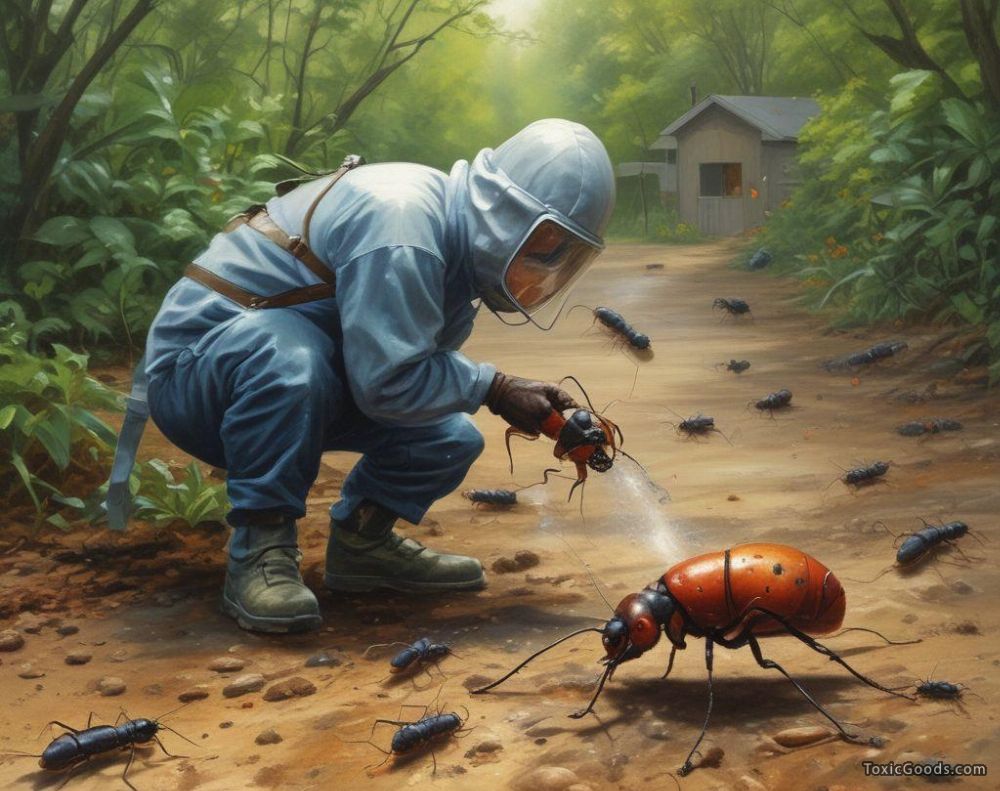Ant and Roach Sprays – The Toxic Pest Control Chemicals
That can of bug spray under your kitchen sink might seem like a harmless solution to unwanted pests, but the truth about ant and roach sprays is far more concerning. These common household products contain a cocktail of chemicals designed to kill insects, but they don’t discriminate – they can harm humans, pets, and the environment just as easily.
Most commercial ant and roach sprays contain synthetic pyrethroids, piperonyl butoxide, or even more toxic organophosphates in some cases. These neurotoxins work by attacking the nervous systems of insects, but they can affect mammals too, including humans. What’s particularly troubling is how many people use these products without proper precautions, spraying them liberally around food preparation areas, pet spaces, and children’s play areas.
How These Chemicals Affect Your Body
 When you spray these insecticides, the fine mist doesn’t just disappear after killing the bugs. The residue lingers on surfaces, becomes airborne, and can be absorbed through skin contact. Immediate effects might include dizziness, headaches, or nausea – your body’s way of telling you something’s wrong. Some people develop skin rashes or respiratory irritation after exposure.
When you spray these insecticides, the fine mist doesn’t just disappear after killing the bugs. The residue lingers on surfaces, becomes airborne, and can be absorbed through skin contact. Immediate effects might include dizziness, headaches, or nausea – your body’s way of telling you something’s wrong. Some people develop skin rashes or respiratory irritation after exposure.
The more insidious danger lies in chronic exposure. Regular use of these sprays in your home means you’re constantly exposed to low levels of neurotoxins. Studies have linked long-term exposure to certain pesticide ingredients with neurological problems, hormone disruption, and even increased cancer risk. Children and pets are especially vulnerable because of their smaller size and faster metabolisms.
The Environmental Impact Goes Beyond Your Home
Every spray that misses its target doesn’t just vanish. These chemicals end up in our waterways, affecting aquatic life. Many common pesticide ingredients are extremely toxic to fish and beneficial insects like bees. Even when used as directed, the cumulative effect of millions of households using these products creates significant environmental pollution.
What many people don’t realize is that these sprays often kill more than just the target pests. Beneficial insects that help control pest populations naturally become collateral damage. This can actually make your pest problems worse over time by disrupting the natural balance.
Safer Alternatives That Actually Work
Before reaching for that toxic spray, consider prevention first. Simple measures like sealing entry points, eliminating food sources, and using natural deterrents can solve many pest problems without chemicals. For active infestations, boric acid powder (used carefully), diatomaceous earth, or essential oil-based repellents can be effective alternatives.
If you must use chemical sprays, look for products with the EPA’s Safer Choice certification and always follow label instructions precisely. Never use outdoor products indoors, and consider spot treatments rather than whole-room spraying. Proper ventilation and avoiding treated areas until dry can significantly reduce exposure risks.
Chemical Properties and Health Effects of Common Ant/Roach Spray Ingredients
| Chemical | Type | Human Health Effects | Environmental Impact |
|---|---|---|---|
| Pyrethroids | Synthetic insecticide | Neurological symptoms, skin irritation | Highly toxic to aquatic life, bees |
| Piperonyl butoxide | Synergist | Potential carcinogen, liver damage | Persists in environment, toxic to fish |
| Fipronil | Phenylpyrazole | Headaches, nausea, potential neurotoxin | Extremely toxic to birds and aquatic life |
| Hydramethylnon | Slow-acting poison | Mild irritation, possible carcinogen | Toxic to beneficial insects |
References and Sources
- National Pesticide Information Center (NPIC)
Science-based information about pesticide ingredients and safety
URL: http://npic.orst.edu - EPA – Pesticides and Consumer Safety
Official guidelines on proper pesticide use and health effects
URL: https://www.epa.gov/safepestcontrol - Beyond Pesticides
Nonprofit organization providing research on pesticide alternatives
URL: https://www.beyondpesticides.org
